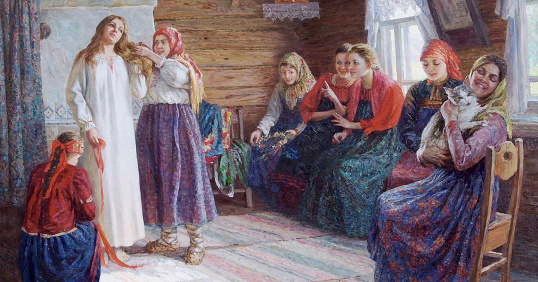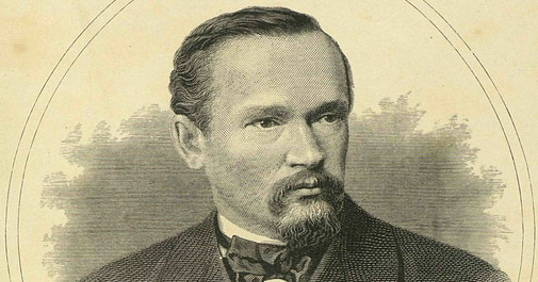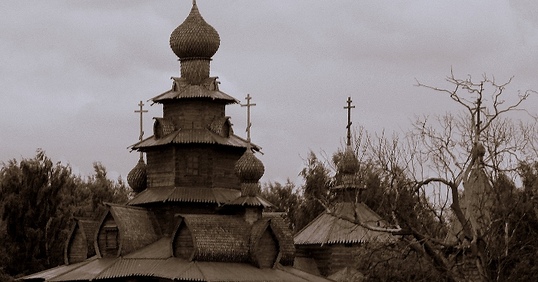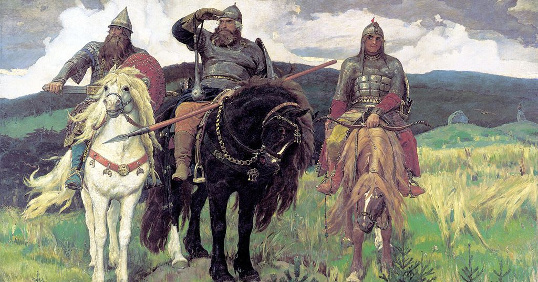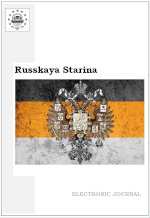1 March 31, 2016
1.
Relevant Topic: The Herrnhuter Mission in Russia
2. Sergei N. Lositsky
Sarepta and the Russian Government from the Foundation of the Settlement to the End of the 18th Century
Russkaya Starina, 2016, Vol. (17), Is. 1, pp. 5-18.
Number of views: 2025 Download in PDF
3. Aleksandr E. ParfenovRusskaya Starina, 2016, Vol. (17), Is. 1, pp. 5-18.
Abstract:
In 1765, near Tsaritsyn on the Volga, a German settlement was established and named Sarepta. The settlement was founded due to the so-called colonization policy initiated by the Russian Empress Catherine the Great to encourage the economic development of territories in the South of Russia. While Sarepta was one of many foreign settlements established in the Lower Volga region in the late 18th century, it was sharply different as to the social status of its inhabitants and some preferences and benefits they received from the Russian Government. Those preferences and benefits were granted due to the special relationship of the Sarepta founders with the Russian state authorities.
In 1765, near Tsaritsyn on the Volga, a German settlement was established and named Sarepta. The settlement was founded due to the so-called colonization policy initiated by the Russian Empress Catherine the Great to encourage the economic development of territories in the South of Russia. While Sarepta was one of many foreign settlements established in the Lower Volga region in the late 18th century, it was sharply different as to the social status of its inhabitants and some preferences and benefits they received from the Russian Government. Those preferences and benefits were granted due to the special relationship of the Sarepta founders with the Russian state authorities.
Number of views: 2025 Download in PDF
Abolishment of the Moravian Community in Sarepta
Russkaya Starina, 2016, Vol. (17), Is. 1, pp. 19–25.
Number of views: 1806 Download in PDF
4. Svetlana G. BatyrevaRusskaya Starina, 2016, Vol. (17), Is. 1, pp. 19–25.
Abstract:
In 1765, on the Volga near Tsaritsyn a Moravian settlement of Sarepta was established. As a missionary settlement Sarepta existed up to 1892. Despite its close contacts with the surrounding world, Sarepta for a long time managed to preserve the traditional Moravian way of life. But by the end of the 19th century, a serious social crisis had matured which caused abolishment of the Moravian community in Sarepta in 1892. This event marked the end of a process of the missionary settlement transformation into a secular village.
In 1765, on the Volga near Tsaritsyn a Moravian settlement of Sarepta was established. As a missionary settlement Sarepta existed up to 1892. Despite its close contacts with the surrounding world, Sarepta for a long time managed to preserve the traditional Moravian way of life. But by the end of the 19th century, a serious social crisis had matured which caused abolishment of the Moravian community in Sarepta in 1892. This event marked the end of a process of the missionary settlement transformation into a secular village.
Number of views: 1806 Download in PDF
Kalmyk Collections in German Museums: on the Issue of the Ethnic Tradition
Russkaya Starina, 2016, Vol. (17), Is. 1, pp. 26-32.
Number of views: 1837 Download in PDF
Russkaya Starina, 2016, Vol. (17), Is. 1, pp. 26-32.
Abstract:
This paper provides an overview of Kalmyk collections in German museums. The objects of research are the artifacts of the traditional culture representing economy, nomadic way of life and Buddhist worship. The author considers the cultural heritage of the Republic of Kalmykia and reveals the composition and content of Buddhist art collections from the Ethnographic Museum (Herrnhut) and the State Ethnographic Museum (Dresden). These collections were obtained during the Herrnhuters’ missionary activity in the Kalmyk encampments in the 18th–19th centuries and require further comprehensive museological study combining methods of art history, history and ethnoculturology. The paper focuses on the comparative study of the ethnic specifics of the Buddhist iconography from German and Russian museums.
This paper provides an overview of Kalmyk collections in German museums. The objects of research are the artifacts of the traditional culture representing economy, nomadic way of life and Buddhist worship. The author considers the cultural heritage of the Republic of Kalmykia and reveals the composition and content of Buddhist art collections from the Ethnographic Museum (Herrnhut) and the State Ethnographic Museum (Dresden). These collections were obtained during the Herrnhuters’ missionary activity in the Kalmyk encampments in the 18th–19th centuries and require further comprehensive museological study combining methods of art history, history and ethnoculturology. The paper focuses on the comparative study of the ethnic specifics of the Buddhist iconography from German and Russian museums.
Number of views: 1837 Download in PDF
Articles and Statements
5. Alexey A. Volvenko
Ivan Krasnov about “the Cossack nationality” and “the Don patriotism” (Based on Periodicals of the 1860s)
Russkaya Starina, 2016, Vol. (17), Is. 1, pp. 33-40.
Number of views: 1830 Download in PDF
6. Alexander A. VenkovRusskaya Starina, 2016, Vol. (17), Is. 1, pp. 33-40.
Abstract:
In the article, social and political views of the famous representative of the Don Cossack generals of the 19th century Ivan Ivanovich Krasnov are analyzed. His ideas about “the Cossack nationality” and “the Don patriotism” proved in articles of local and central periodicals are placed in an event context of reformatory policy of the Ministry of Defense for the Don Cossacks in the 1860s.
In the article, social and political views of the famous representative of the Don Cossack generals of the 19th century Ivan Ivanovich Krasnov are analyzed. His ideas about “the Cossack nationality” and “the Don patriotism” proved in articles of local and central periodicals are placed in an event context of reformatory policy of the Ministry of Defense for the Don Cossacks in the 1860s.
Number of views: 1830 Download in PDF
Soviet Youth Nonconformist Subculture in the Context of the International Movement of Youth Protest (the End of the 1960s – 1970s)
Russkaya Starina, 2016, Vol. (17), Is. 1, pp. 41-60.
Number of views: 1884 Download in PDF
Russkaya Starina, 2016, Vol. (17), Is. 1, pp. 41-60.
Abstract:
The article discusses the causes and forms of youth protest in the US and some European countries in the second half of the 1960s. The extent of its influence on the emergence of nonconformist youth subculture in the Soviet Union in the late 1960s – 1970s is revealed, and the general features of various youth subcultures of the Soviet Union and abroad are analyzed.
The article discusses the causes and forms of youth protest in the US and some European countries in the second half of the 1960s. The extent of its influence on the emergence of nonconformist youth subculture in the Soviet Union in the late 1960s – 1970s is revealed, and the general features of various youth subcultures of the Soviet Union and abroad are analyzed.
Number of views: 1884 Download in PDF
Reviews and Surveys
7. Evgeny F. Krinko
The Significance of Battles of 1941–1943 in the South of Russia in the Victory in the Great Patriotic War
Russkaya Starina, 2016, Vol. (17), Is. 1, pp. 61-68.
Number of views: 1854 Download in PDF
8. Igor O. TyumentsevRusskaya Starina, 2016, Vol. (17), Is. 1, pp. 61-68.
Abstract:
The all-Russian scientific conference “The Significance of Battles of 1941–1943 in the South of Russia in the Victory in the Great Patriotic War” took place at the Southern Scientific Center of the Russian Academy of Sciences on June 3–6, 2016. 120 specialists from different research centers took part in the conference. The participants debated the large circle of the problems relating to the military operations in the South of the country, which made it possible to eliminate some lacunae and “blank spots” in the historiography, contributing to the creation of the integral image of the wartime events.
The all-Russian scientific conference “The Significance of Battles of 1941–1943 in the South of Russia in the Victory in the Great Patriotic War” took place at the Southern Scientific Center of the Russian Academy of Sciences on June 3–6, 2016. 120 specialists from different research centers took part in the conference. The participants debated the large circle of the problems relating to the military operations in the South of the country, which made it possible to eliminate some lacunae and “blank spots” in the historiography, contributing to the creation of the integral image of the wartime events.
Number of views: 1854 Download in PDF
Kravtsov, A.E. etc. (eds.). The Town of Hadyzhensk: 150 Years of History. Hadyzhensk: Platonov, 2014
Russkaya Starina, 2016, Vol. (17), Is. 1, pp. 69-76.
Number of views: 1844 Download in PDF
9. Russkaya Starina, 2016, Vol. (17), Is. 1, pp. 69-76.
Abstract:
The review is devoted to the anniversary edition of the book describing the 150-year history of Hadyzhensk, Krasnodar region. The review criticizes the most problematic issues of the publication from the author’s point of view of the author.
The review is devoted to the anniversary edition of the book describing the 150-year history of Hadyzhensk, Krasnodar region. The review criticizes the most problematic issues of the publication from the author’s point of view of the author.
Number of views: 1844 Download in PDF



